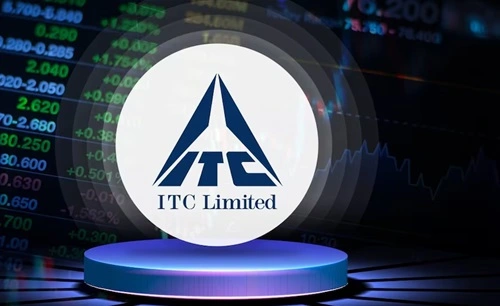ITC Limited, one of India’s largest conglomerates, has carved a unique position across diverse industries, including FMCG, agriculture, paper, packaging, hotels, and IT services. Founded in 1910 as the Imperial Tobacco Company of India, ITC has transformed over the decades into a multi-business enterprise, generating significant value for shareholders and stakeholders. Its diversified portfolio and sustainable practices make ITC a vital player in the Indian economy. This article examines ITC’s business model and explains how the company earns money.
Overview of ITC’s Business Model

ITC operates on a diversified business model, with revenue streams spanning across multiple sectors:
- Fast-Moving Consumer Goods (FMCG): Personal care, packaged foods, and stationery products.
- Tobacco Products: Cigarettes and other nicotine-based offerings.
- Hotels: Luxury and mid-market accommodations under the ITC Hotels brand.
- Agri-Business: Agricultural trading and export operations.
- Paper and Packaging: Manufacturing paperboards, specialty papers, and flexible packaging solutions.
- Information Technology (IT): IT services through ITC Infotech.
This multi-pronged approach allows ITC to mitigate risks and capitalize on opportunities across industries.
Revenue Streams
a) FMCG
ITC’s FMCG segment has been the fastest-growing contributor to its revenue, comprising two subcategories:
- Foods: Popular brands like Aashirvaad (atta and spices), Sunfeast (biscuits and noodles), Bingo! (snacks), and Yippee! (noodles).
- Personal Care: Products under the Fiama, Vivel, and Savlon brands, including soaps, shampoos, and hand sanitizers.
- Stationery: ITC’s Classmate and Paperkraft brands dominate the stationery segment.
- Lifestyle Retail: ITC’s Wills Lifestyle and John Players brands cater to fashion and apparel.
How It Earns Money: ITC earns revenue through product sales in domestic and international markets. The FMCG segment also benefits from premium pricing on high-quality products and wide distribution networks.
b) Tobacco and Cigarettes
Despite its diversification, ITC’s core revenue driver remains its tobacco business. The company commands over 75% market share in India’s organized cigarette market with brands like:
- Classic
- Gold Flake
- Wills Navy Cut
How It Earns Money: ITC generates substantial revenue through the sale of cigarettes and related products. This segment’s high-profit margins are due to economies of scale and brand loyalty.
c) Hotels
ITC is a significant player in India’s hospitality sector, operating luxury and eco-friendly hotels under brands such as ITC Hotels, WelcomeHotels, and Fortune Hotels. The company focuses on green initiatives, offering luxury experiences with sustainability at its core.
How It Earns Money: ITC earns revenue through:
- Room bookings in its luxury and mid-market hotels.
- Food and beverage services in its in-house restaurants.
- Banquet and event hosting.
d) Agri-Business
ITC’s agri-business focuses on sourcing and trading agricultural commodities like wheat, rice, coffee, and spices. The company also provides market linkages for farmers through its e-Choupal initiative, a digital platform enabling farmers to sell their produce at fair prices.
How It Earns Money: ITC earns revenue by selling agricultural products domestically and in export markets. Its e-Choupal reduces procurement costs and increases operational efficiency.
e) Paperboards and Packaging
ITC is a market leader in the production of high-quality paperboards, specialty papers, and packaging solutions. This segment caters to industries like FMCG, pharmaceuticals, and electronics.
How It Earns Money: Revenue is generated through sales of paper and packaging materials to both domestic and international businesses. ITC’s focus on sustainability, such as using renewable energy in production, enhances profitability.
f) Information Technology (IT)
Through ITC Infotech, the company provides IT services, including digital transformation, data analytics, and cloud-based solutions, catering to global clients in industries like finance, retail, and manufacturing.
How It Earns Money: ITC Infotech earns revenue from software development, IT consulting, and long-term service contracts with enterprise clients.
Cost Structure
Running a conglomerate like ITC involves significant costs across its diverse operations:
a) Raw Materials
Sourcing raw materials for FMCG products, tobacco, and paperboards constitutes a major cost. ITC’s vertical integration helps control procurement costs.
b) Manufacturing and Operations
Operating multiple production facilities for FMCG, cigarettes, paper, and packaging requires investments in machinery, labor, and energy.
c) Marketing and Advertising
ITC spends heavily on branding and marketing to maintain its market dominance. Its iconic advertising campaigns for brands like Aashirvaad and Sunfeast ensure customer loyalty.
d) Distribution and Logistics
Managing a vast distribution network for FMCG products, cigarettes, and agricultural goods is a key expense.
e) Technology
Investments in digital platforms like e-Choupal and IT infrastructure for ITC Infotech add to operational costs.
f) Sustainability Initiatives
ITC allocates funds for green practices such as water conservation, renewable energy, and carbon-neutral operations, enhancing its ESG (Environmental, Social, and Governance) profile.
Strategies Driving Revenue Growth
To maintain growth, ITC employs several strategies:
a) Diversification
ITC’s foray into non-tobacco businesses like FMCG, hotels, and IT services reduces its dependence on cigarettes, diversifying revenue streams.
b) Focus on Premium FMCG
The company is expanding its portfolio of premium FMCG products, such as Aashirvaad Select and Fiama Di Wills, to target higher-income groups.
c) Digital Transformation
ITC leverages technology for operational efficiency and customer engagement. Platforms like e-Choupal help the company streamline its agri-business operations.
d) Sustainability and ESG
ITC’s focus on sustainability, such as achieving water positivity and carbon neutrality, appeals to environmentally conscious investors and customers.
e) Global Expansion
ITC exports products like cigarettes, paperboards, and FMCG goods to international markets, contributing to revenue diversification.
Challenges and Opportunities
Challenges
- Regulatory Risks: Stringent regulations and high taxes on tobacco products could impact cigarette sales.
- Competition: Intense competition in the FMCG sector from companies like HUL, Nestlé, and Patanjali.
- Economic Slowdowns: Reduced consumer spending during economic downturns can affect revenues.
Opportunities
- Rural Penetration: Expanding distribution in rural areas for FMCG products can drive growth.
- E-Commerce Growth: Leveraging e-commerce platforms for direct-to-consumer sales in the FMCG segment.
- Sustainability-Driven Growth: Expanding green practices can attract ESG-focused investors and customers.
Financial Overview
ITC has consistently reported strong financial performance, with its tobacco segment contributing the highest profits. However, its FMCG segment has shown the fastest growth in recent years. ITC’s ability to maintain high margins in tobacco while diversifying into high-growth segments like FMCG positions it as a resilient and future-ready enterprise.
Conclusion
ITC’s diversified business model enables it to generate revenue across multiple industries, ensuring resilience and long-term sustainability. With its strong brand equity, innovation in FMCG, and focus on sustainability, ITC has positioned itself as a leader in the Indian market. By leveraging its strengths and exploring new growth opportunities, ITC is poised to maintain its leadership and drive future success.

